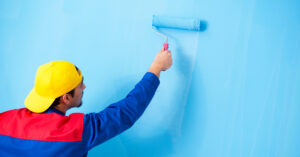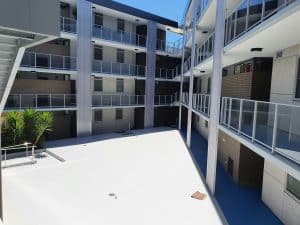
A bad paint job can not only taint the appearance of your home but also cost you additional money to fix it. The longer you leave it, the worse it gets. To save yourself from that headache, this article will share some common signs of a bad exterior and interior paint job.
General signs of a bad interior and exterior paint job
There are some common signs which can tell you that you need to call in a professional painter. For example-
- Blistering: This is one of the first signs of a paint job badly done. This tends to happen when the wet paint dries and contracts on the surface, proceeding to peel off. This tends to happen when the surface needs to be prepared better by the painter, especially when they don’t wait for the wall to dry properly after cleaning it.
- Chalking: If you notice long, distinct lines on the surface of your walls, that’s a sign of chalking. It happens due to moisture seeping between two layers of paint and making them lift. This can happen due to exposure to extreme weather conditions, which could indicate the coating wasn’t done properly. It’s not usually seen in interior paint.
- Cracking: Another obvious sign of a bad interior and exterior paint job is cracking. Though it’s common, it doesn’t mean you should avoid it because it’s the starting symptom of a bigger issue—the structural integrity of your property. It happens due to a bad paint job but may end up in something much worse.
- Others: It’s not hard to detect if a paint job was bad. If you notice stains, uneven layers, bubbles on the new coats of paint, blotches and streaks and such irregularities, you’ll know the job was not done right.
How to detect your painter is doing a bad job
If you monitor the entire process properly, you can easily tell when a painter is not doing their job properly. This will save you from suffering the after-effects of a bad paint job. The signs include-
- Inadequate or no surface preparation: Every painting job requires a level of surface prep, which includes repairing dents and cracks, peeling off old paint, cleaning and rinsing the walls, and such minor details. If you don’t see your painter doing these, that’s a sign that the outcome won’t be good at all.
- Inadequate or inappropriate tools: A painter should do more than just pop up to your house carrying buckets of paints and some brushes. Take a proper look at what equipment they brought along. They should have rollers, caulks, edging tools, and sturdy ladders with them. They should use painter’s tape instead of regular ones.
- The painters need to cover the room properly: While doing interior painting, it’s extremely important to make sure the paint doesn’t spread everywhere. But still, it’s impossible for drops not to get scattered here and there, which is why professional painters cover up all the room furniture, floors, and other props.
So, the best way to make sure you don’t have to deal with a bad paint job is to hire painters from a reputable company and keep a close eye on the whole process.







